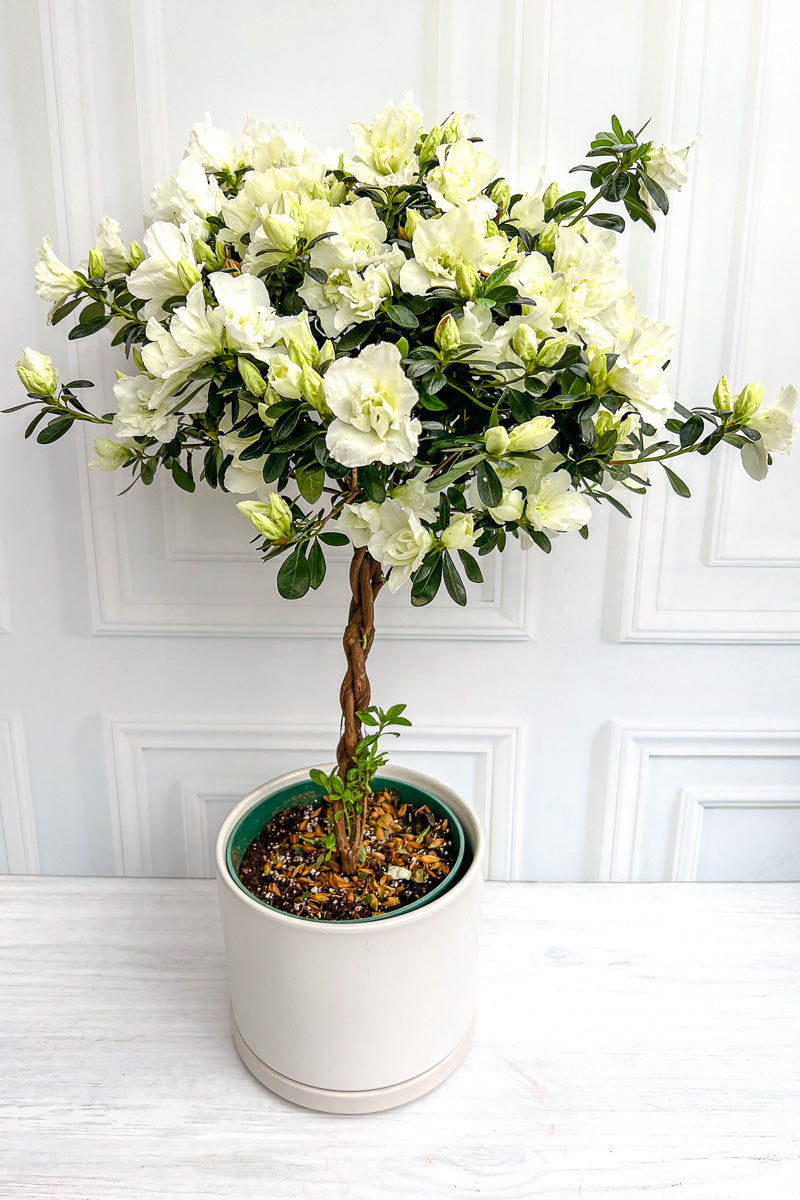Azalea Tree Plant
Azalea trees are a popular choice for gardens and landscapes due to their vibrant colors and beautiful blooms. These plants are part of the Rhododendron family and are known for their showy flowers that come in a variety of colors such as pink, white, red, purple, and orange. Azaleas are also known for their lush, green foliage that adds to their appeal. In this article, we will explore the characteristics, care, and landscaping uses of the Azalea tree plant.
Characteristics
Azaleas are deciduous or evergreen shrubs that can grow up to 6 feet tall and wide, depending on the variety. They have small, oval-shaped leaves that are a dark green color. The flowers of the Azalea tree plant are trumpet-shaped and typically bloom in the spring, although some varieties can bloom in the summer or fall. These flowers can range in size from 1 to 3 inches across and can be single or double-petaled.
One of the main attractions of the Azalea tree plant is the variety of colors that are available. Some popular varieties include ‘George L. Tabor’ with pink flowers, ‘Girard’s Pleasant White’ with white flowers, and ‘Stewartstonian’ with red flowers. Azaleas can also have bi-colored flowers, such as ‘Girard’s Fuchsia’ with pink and white blooms. With so many color options, there is sure to be an Azalea variety that will suit any garden or landscape.
Care
Azaleas are relatively low-maintenance plants, but they do have specific care requirements to thrive. One important factor to consider is the soil. Azaleas prefer well-draining, acidic soil with a pH between 4.5 and 6.0. If your soil is too alkaline, you can amend it with sulfur or peat moss to lower the pH. Azaleas also benefit from a layer of mulch around their roots to retain moisture and regulate soil temperature.

When it comes to watering, Azaleas like to have consistently moist soil, but they do not like to be waterlogged. It is best to water deeply but infrequently to encourage deep root growth. In the spring and summer, when the plant is actively growing, you may need to water more often, especially during periods of drought. In the fall and winter, you can reduce watering to allow the plant to go dormant.
Azaleas also benefit from regular fertilization to promote healthy growth and flowering. You can use a balanced, slow-release fertilizer formulated for acid-loving plants in the spring before new growth emerges. Avoid fertilizing in late summer or fall, as this can stimulate new growth that may be damaged by winter frosts.
Pruning is another important aspect of Azalea care. You can prune Azaleas after they have finished flowering to shape the plant and remove any dead or diseased branches. Be sure to use sharp, clean pruners to make clean cuts and minimize damage to the plant. You can also deadhead spent flowers to encourage more blooms and prevent seed production.
Landscaping Uses
Azaleas are versatile plants that can be used in a variety of landscaping settings. They are commonly used as foundation plants near homes or buildings, where their colorful blooms can add interest and curb appeal. Azaleas can also be planted in mixed borders with other shrubs, perennials, and annuals to create a dynamic and colorful garden.

One popular way to use Azaleas in the landscape is to plant them in mass plantings or drifts. This creates a striking display of color when the plants are in bloom and can make a bold statement in the garden. Azaleas can also be used as specimen plants, where they are planted on their own to showcase their unique colors and form.
Another landscaping use for Azaleas is as a hedge or screen. Azaleas can be planted close together to form a dense, evergreen barrier that provides privacy and beauty. Some varieties, such as ‘Pride of Mobile’ or ‘Hershey’s Red’, are well-suited for this purpose due to their compact growth habit and vibrant flowers.
In conclusion, Azaleas are a beautiful and versatile plant that can add color and interest to any garden or landscape. With proper care and maintenance, Azaleas can thrive and provide years of enjoyment with their vibrant blooms and lush foliage. Whether used as a foundation plant, in mixed borders, or as a hedge, Azaleas are sure to make a statement in any outdoor space. Consider adding an Azalea tree plant to your garden today and enjoy the beauty it brings year after year.